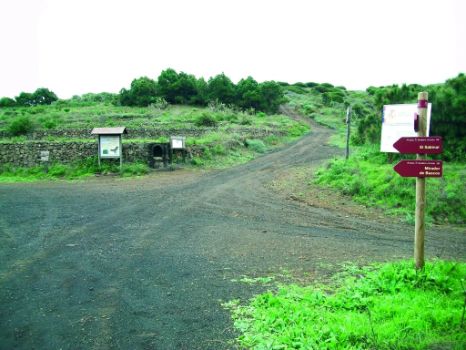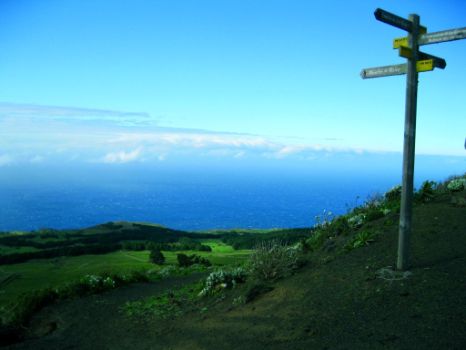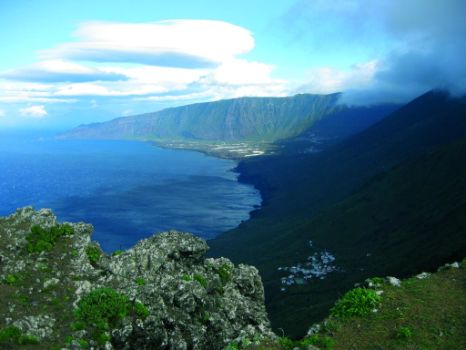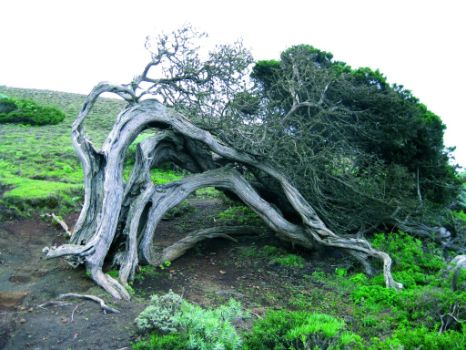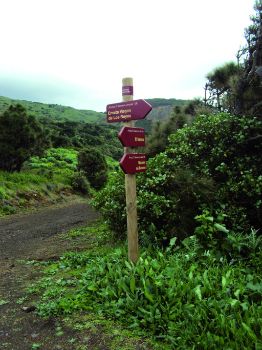Net of Natural
Trails

Stage 2: El Sabinar - Ermita Virgen de los Reyes
Description
The Road to the Shrine of the Patron Virgin
From the iconic scenery of El Sabinar, the trail goes through green meadows until it reaches Mirador de Bascos (Bascos Viewpoint), with amazing views over the Valle de El Golfo (El Golfo Valley), and then descends gently and joins the popular Camino de la Virgen (Road of the Virgin) headed for the shrine of the patron Virgin of El Hierro.

The second stage of the circular trail starts from El Sabinar, which can be reached by car until we come to an area displaying information panels. This unique landscape is home to particularly impressive specimens of junipers (Juniperus turbinata ssp. canariensis), with twisted trunks molded by the action of the wind, which will accompany us throughout this section of the trail.
From El Sabinar, a path headed for Mirador de Bascos climbs gently through a region of meadows characteristic of mid and high-lying mountain areas, where small groups of stunted junipers and other scrub vegetation such as thyme (Thymus vulgaris) and gum rock roses (Cistus ladanifer) grow. As we approach the viewpoint, there appear some copses of Monterey pine (Pinus radiata), a species that was introduced in the Canary Islands in the middle of the last century.

Mirador de Bascos is one of the most popular viewpoints of the island, since it is located very close to the shrine of the Virgen de los Reyes, patron of El Hierro. Situated 850 m above the beach of Arenas Blancas, from this vantage point we can enjoy one of the best scenic views of the Valle de El Golfo, with the village of Sabinosa in the foreground. The viewpoint site has also a water spring for drinking and refreshment.
From this point, the slope of the trail ascends and we begin to see wide meadow areas very typical of this part of El Hierro, alternating with sturdy pine groves. In this stretch, we will often see sheep and horses peacefully grazing on our way up to the higher part of the island, point from which we will enjoy fabulous views of El Golfo, on one side, and of the pasture lands we have left behind, on the other.

Without leaving the meadows, the trail begins to descend gently along a dirt track until it comes to a crossroads from which the trail heads out – joining the Camino de la Virgen or Road of the Virgin – in the direction of Piedra del Regidor (Alderman’s Stone), situated on the slopes of a mountain. During the festivity called Bajada de la Virgen or Descent of the Virgin in pilgrimage to Valverde, the island authorities move the image of the Virgen de los Reyes from its shrine to Piedra del Regidor, from where it is carried in procession by the faithful at dawn; the people of Sabinosa being the first ones to take the image to another village.
From Piedra del Regidor or Alderman’s Stone, the path detours for a few meters toward the shrine of Virgen de los Reyes, located in La Dehesa, end of this section of the circular trail.
Profile
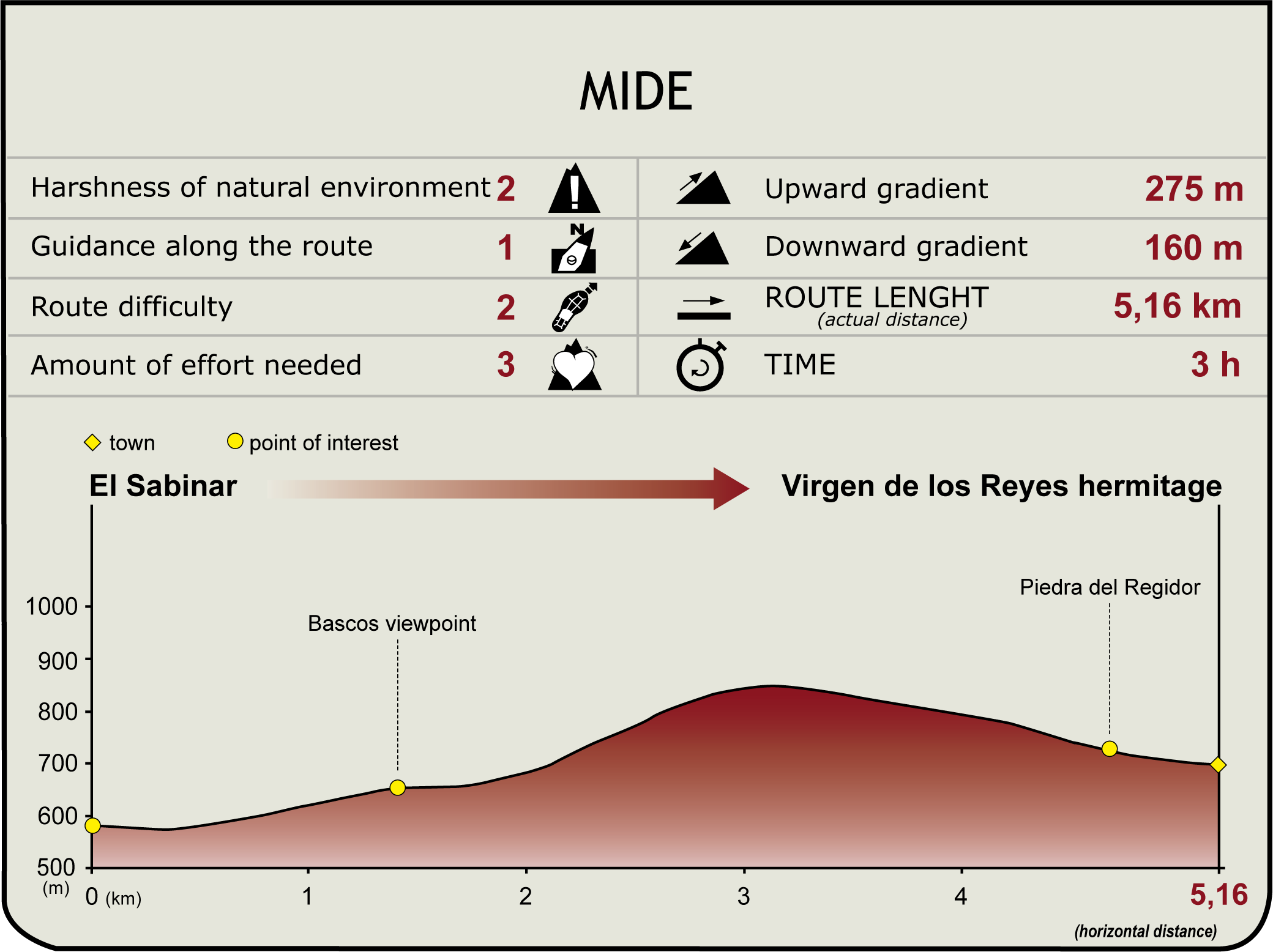
Highlights
Further information
Shrine of the Virgin
The shrine of the Virgen de los Reyes is a simple construction whose whitewashed walls contrast with the black ground on which the building stands and the green of surrounding vegetation. It is located in La Dehesa, an out-of-the-way and unpopulated area where the shrine was built in the sixteenth century, funded by contributions from herdsmen living in the region.
The building, made of whitewashed masonry with a gable roof, was rebuilt in the eighteenth century. The interior consists of a single nave and is surrounded by a wall. The shrine has a bell tower that can be accessed via an external staircase.
The Virgen de los Reyes is a sixteenth century polychrome wood carving in the Gothic and Renaissance styles that represents the Virgin, whose face is carved in fine and delicate detail, carrying in her arms the baby Jesus. It is in a niche placed in the middle section of a seventeenth century altarpiece, flanked by sculptures of the three Magi. The altarpiece is remarkable for the intense use of the color red, as well as the number of columns and gold foil used in its decoration.



